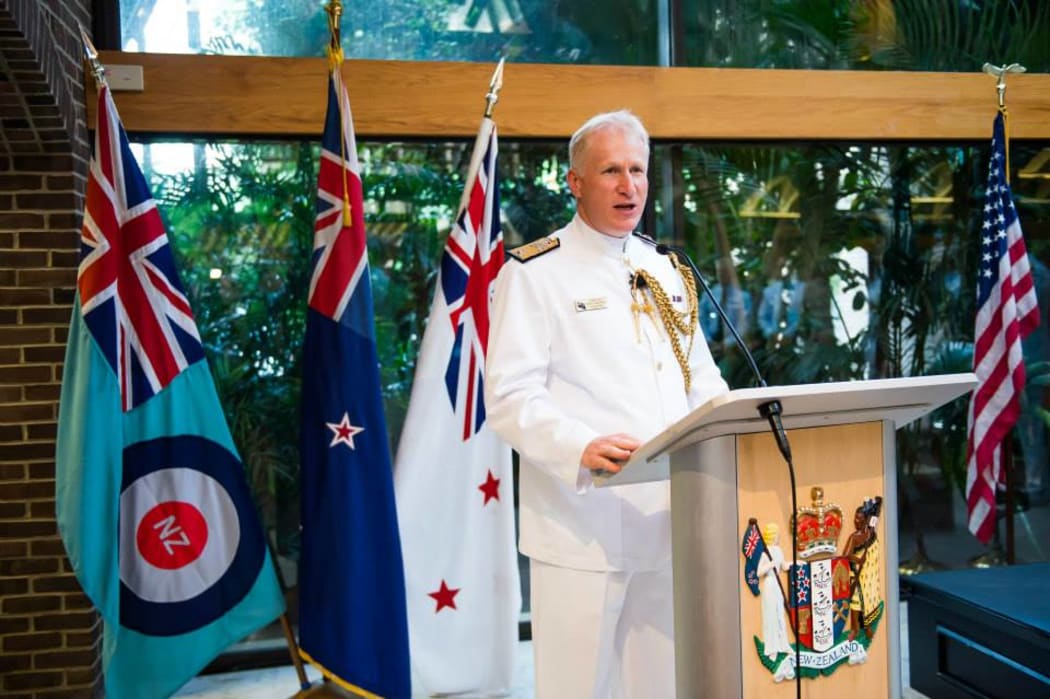A top air force official spotted a little black box in a New Zealand Embassy toilet months before a covert camera was discovered.

Alfred Keating is on trial in the Auckland District Court. Photo: Facebook / New Zealand Embassy - Washington, D.C.
Air force attache Wayne Morris gave evidence in the trial of his former boss, Alfred Keating, in the Auckland District Court this afternoon.
Mr Keating is accused of planting a motion-activated camera in a unisex bathroom in the New Zealand Embassy in Washington DC; a claim he has categorically denied.
This morning Mr Morris said he had seen a "small black box" in the toilet two or three months before the covert camera was discovered.
"Where the radiator was inside those bathrooms I saw the side panel was off which I thought was unusual and when I got up to stand to look at it I had quick look and I did see a saw a small black box which I thought was unusual.
"I gave it a two to three second look and didn't identify it and just dismissed it as a heating control unit or something like that because it was inside the radiator."
Mr Morris said it wasn't until he was interviewed by police later on that he realised he may have seen the covert camera found on 27 July, 2017.
Yesterday, the court heard DNA found on the camera's memory card was ten thousand million times more likely to be Mr Keating's than a random New Zealander's.
Institute of Environmental Science and Research (ESR) scientist Susan Vintiner told the court an ultra-sensitive test, coined the low copy technique, was used to get the result.
In cross-examining Ms Vintiner this morning, Mr Keating's defence lawyer Ron Mansfield questioned the reliability of the technique; given its sensitivity and the risk of DNA contamination.
The court heard forensic labs in the UK no longer employed the technique which has been used to secure high-profile convictions, like that of American woman Amanda Knox, that were later overturned.
Ms Vintiner confirmed that even if exhibits were managed with "extreme care", the risk of contamination stilll existed and could not be completely excluded.
On top of the forensic DNA evidence, the jury of ten women and two men have also been presented with digital forensic evidence.
Kerwin Stewart, a forensic investigator with the New Zealand Police, was present when a search warrant was executed at Mr Keating's home and cloned the hardrive of the defendant's personal laptop for analysis.
This afternoon, he told the jury he found 12 video files on the laptop dated between 25 and 27 July, 2017.
The terms 'brickhouse camscura modes' and 'brickhouse camscura switch positions' were also entered into the internet search engine Google on 25 July, 2017.
Earlier this week, the jury heard the camera found in the unisex bathroom had 'Brickhouse Security' embossed on the side of the device.
Mr Stewart told the court he also found an application called Ccleaner was Google searched on 17 September, 2017 and used a number of times - the last being 26 November, 2017.


